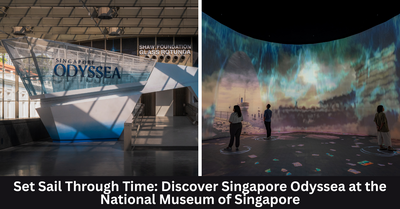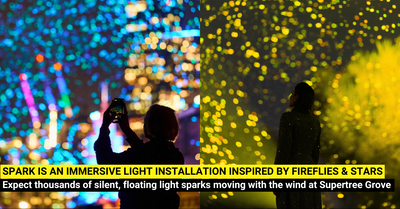The special exhibition will feature over 140 exquisite objects spanning the 16th to the 20th century, and looks into the galleon trade between the two seemingly distant countries.
Venue: Asian Civilisations Museum
Date: now to 17 Mar 2024
Time: 10am to 7pm (Sat to Thu) | 10am to 9pm (Fri)
Fee:
- Adults: $12 (Singaporeans & PRs) | $25 (Foreign visitors)
- Children (6 years & below): Free
- Concession (Students & Seniors): Free (Singaporeans & PRs) | $20 (Foreign visitors)
Manila Galleon: From Asia to the Americas

Manila Galleon: From Asia to the Americas explores a trade that connected Asia to the Americas and Europe. For centuries, ships laden with porcelain, silk, spices, and other goods sailed annually across the Pacific from Manila to Acapulco, returning with millions of pieces of silver.
Featuring over 140 extraordinary works of art from the 16th to 20th century, the exhibition reveals how people, goods, and ideas circulating through the Philippines and Mexico created a distinctive shared cultural and artistic heritage. Looking at Manila as a precursor of Singapore, it reflects the unique qualities of Singapore’s own blended society and the important role port cities have played in trade and cultural exchanges that shaped the world.
Exhibition Highlights
Virgin of the Immaculate Conception
Philippines, Polo, 18th century
Carved and painted molave wood, gold
The Virgin Mary is shown standing on an inverted crescent moon with a coiled serpent. She is surrounded by angels and symbols from the Old Testament. The Immaculate Conception is the belief that the Virgin Mary was free of sin from the moment of her conception.
The Church of the Conception of the Blessed Virgin Mary (now Manila Cathedral) was the first church built in the Philippines after the arrival of the Spanish.
Chalice
Probably Mexico, 17th century
Gold, diamonds, rubies, emeralds, topaz, amethysts
This chalice held the consecrated wine for services at the San Agustin Church in Manila. It is decorated with Baroque motifs, partially enamelled, and elaborately embellished with 148 precious gems.
Chest with view of Manila
Philippines, around 1650–60
Wood, pigments, binders, forged iron
This travelling chest is decorated with a painting of Manila, one of the oldest views of the city. It shows a walled town facing the sea and land, surrounded by water —the mouth of the Pasig River. The city has three bastions at the major corners. Densely clustered houses and churches (domed towers with crosses) appear on the opposite banks.
Many details have associations with China, which suggests that the view was painted by a Chinese artist living in Manila. Figures in Ming dynasty clothing stroll about a plaza at the lower right: some are on horseback accompanied by attendants holding parasols. Chinese ships float in the harbour. An area of thatch-roofed houses at the end of the waterway is labelled “Parián de los Sangleyes”, referring to the market quarter where the Chinese (Sangleys) were forced to live.
Map of the Philippines
Pedro Murillo Velarde (cartographer) and Francisco Suarez (artist), engraved by Nicolas de la Cruz Bagay, 1734
Engraving
This is one of the earliest and most important maps of the Philippines. The images in the left border show the many different ethnic groups residing in the islands, with different groups appearing in a single image. From the upper left, we see: Sangleys (Chinese); Africans; mestizos and Japanese; Spanish and indigenous; Armenians, Persians, and Malabars; and East Indians. The port of Cavite, where many galleons were built, appears at the lower right.
The map is a collaboration of a cartographer, illustrator, and engraver. According to the inscription at the bottom, it was commissioned by Governor-General Fernando Valdes y Tamon in response to an order from Philip V of Spain.
Portrait of Hasekura Tsunenaga
Archita Ricci (1560–1635) or Claude Deruet (1588–1660)
Italy, around 1615
Oil on canvas
This striking portrait was commissioned to commemorate the historic visit of a Japanese delegation to Rome. The artist details the rich embroidery of Hasekura’s robe, and includes a sailing ship at the back, a reference to the long voyage undertaken. The figures in the clouds above the ship point to Hasekura’s Christian faith.
Folding screen with view of Mexico City
Attributed to Diego Correa
Mexico, 1690s
Wood, fabric, oil pigment, varnish
Created in the second half of the 17th century, the screen features a panoramic birds-eye view of Mexico City. It was likely based on a seventeenth century map. The image is idealised, privileging the elite Spanish view of the city. Structures such as churches, schools, hospitals, and monasteries appear prominently, while indigenous dwellings can be seen on the outskirt of the city.
It was originally double-sided, with the view of Mexico City on one side and scenes from the conquest of Mexico on the other. It has since been split, with the conquest of Mexico framed as a painting.
The first folding screens arrived in Mexico City from Japan and China as early as 1614. They quickly became sought after luxury items, displayed in sumptuously decorated homes to show the sophisticated tastes of their owners. Mexican versions like this took inspiration from Asian examples, but often depict indigenous festivities, allegories of the four continents, and scenes from the conquest of Mexico.
Cabinet with coat of arms of Mexico City
Philippines, Manila, early 17th century
Woods, bone, silver
This fall-front cabinet is European in form, but was made in the Philippines, with local woods, bone inlay, and silver fittings. The beast-mask and paw-shaped feet at the corners, and lion heads’ drawer pulls, are similar to features on Chinese furniture, so this might be the work of southern Chinese craftsmen — or Filipinos influenced by those works.
The most interesting aspect is the inlay decoration showing the foundation myth of Tenochtitlan, the capital city of the Mexica (Aztecs). After independence, this became the coat of arms of Mexico. It is extremely unusual to find Aztec imagery on European cabinets in this form made in the Philippines. It might have been a special commission from Mexico City, or a gift for a high-ranking Spanish official.
This cabinet and the following related examples on display here are one of the few rare examples of furniture whose origins are debatable. To most scholars, they are currently attributed to the Philippines, probably by Chinese artists or with Filipino collaborators.
Carp tureen
China, Jingdezhen, 1760–80
Porcelain
Gilded bronze mount: probably Spain, late 18th century
This tureen, one of a pair, was commissioned by a Spanish family active in the Philippines. The carp’s cheek displays the arms of the Olza family. Domingo Esteban de Olza y Domezáin was the first commissioner of the Royal Company of the Philippines, founded in 1785, which held a monopoly on trade between the Philippines and Spain until around 1800. He also ordered a Chinese porcelain soup tureen in the shape of a goose.
Animal-form tureens were first made in Europe around 1750, with the basic model of fish tureens being produced in Chelsea, London. However, the Chinese kilns greatly elaborated on this model to produce a highly detailed and whimsical carp.
Costly and delicate, porcelain tureens satisfied the same taste for luxury as the foods they were meant to serve — rich soups or perhaps desserts.
Virgin of Guadalupe
Agustín del Pino (Mexican, active around 1705–28)
Mexico, early 18th century
Oil and mother-of-pearl on wood; frame of wood with mother-of-pearl
This is an enconchado, made by veneering thin pieces of iridescent mother-of-pearl onto a lacquered base, which is decorated with paint. The technique enhances the subject of the painting. The Virgin’s costume is rendered in shimmering pieces of shell. The roses and birds painted in oil are echoed in mother-of-pearl on the frame.
The technique emerged in Mexico in the 17th century. It melded influences from Japanese lacquerware and European oil painting, ingeniously adapted by local artists. The artist Agustín del Pino signed the work at the lower right.
The skin of the Virgin of Guadalupe is slightly dark, like that of an indigenous or mestiza woman. As the Virgin of the Immaculate Conception, she stands on a crescent moon. Distinct to the Guadalupe is a small angel that supports the moon at the edge of her cloak.
John the Evangelist

Mexico, 17th century
Feather mosaic and paper on copper
John the Evangelist is shown here holding a chalice. According to legend, he was given a cup of poisoned wine but was able to drink it without harm. The scene symbolises Christian faith prevailing over death.
Feather mosaics of Christian images began to be made in Mexico in the 16th century. In the following century, smaller feather paintings became popular. Artists added gilded or painted paper to enhance their featherworks, and sometimes included simple landscapes.
Manila shawl
China, early 20th century
Woven and embroidered silk, ivory
Embroidered shawls like this are often called Manila shawls because they were traded through Manila, although they were made in southern China in response to the global demand for Kashmir and Paisley shawls from India in the 18th century.
The centre shows a family gathered in a garden. The faces are made up of small discs of carved and painted ivory. The figures and landscape are comparable to Parsi textiles. Parsi merchants living in Gujarat and Mumbai traded in Chinese-style embroidered clothing. Chinese embroidery workshops may have been established in western India to meet this demand.
Woman in Manton
Juan Luna (Filipino, 1857–1899)
Spain, Madrid, 1880s
Oil on canvas
A fashionable European woman turns to display a sumptuous Manila shawl to the viewer. The shawls were highly sought-after fashion accessories in the 19th century.
The first Filipino painter to gain international fame, Juan Luna mastered the European painting tradition. He won a gold medal at the Madrid exposition of 1884 and received prestigious commissions. His later work took on social issues as he became involved in the revolutionary movement struggling for Philippine independence from Spain.
In 1892, Luna killed his wife and mother-in-law in a jealous rage. However, he was acquitted on the grounds that it was a crime of passion.
Additional Displays
Model of a Manila galleon, scale 1:32

Maximo Agudo Mangas
Spain, 2023
Wood, metal, canvas
This is a contemporary model of a fully fitted and rigged Manila galleon with 70 cannons. The highly detailed design is based on construction plans from 18th century manuscripts. Notice the high forecastles and stern castles, which provided extra space for transporting a diverse range of valuable commodities, such as silk, porcelain, spices, precious metals, and tobacco.
The model was commissioned by ACM and constructed by Maximo Agudo Mangas in consultation with Dr Iván Valdez-Bubnov, from the Universidad Nacional Autónoma de México (UNAM). Mangas has built ship models for the Spanish royal family and museums in Spain and Mexico. Valdez-Bubnov is a naval historian who researches the galleon trade.
This ship model is now on display at the ACM Lobby.
Journeys

Venue: Contemporary Gallery, Level 1
Date: now to 17 Mar 2024
Journeys is a testament to the historical significance of the Manila galleon trade, which connected Asia to the Americas and Europe from 1565 to 1815. The installation features miniature boats laden with goods exchanged as part of the trade, symbolising the connections between distant lands. At the centre of the installation is a remarkable carpet adorned with over 40,000 flowers, which take the form of an intricate map of the trade route. The flowers also represent gratitude, love, friendship and affection – emotions that inspire people across borders.
This installation was organised by ACM in partnership with Lidia Riveros, an independent curator who specialises in Mexican culture and folk arts.
Tree of Life

Venue: Foyer, Level 2
Date: now to 17 Mar 2024
The Tree of life is an ancient symbol used by cultures around the world. It can be used to represent a family tree, serving as a visual representation of the connections and relationships between ancestors, parents and descendants.
This installation takes inspiration from the family trees of mestizo communities that developed as a result of the Manila galleon trade. Mestizo was originally a term for people with one Spanish and one non-Spanish parent, but its meaning has changed over time, and is sometimes used today to refer to anyone of mixed heritage.
This tree includes photos of people of African, Chinese, Filipino, Mexican, and Spanish descent, from Spain, Mexico and the Philippines. Also shown are some of the luxury goods and commodities that were exchanged as part of the Manila galleon trade.
This installation was organised by ACM in partnership with Lidia Riveros, an independent curator who specialises in Mexican culture and folk arts.
Exhibition Programmes And Activities
Adventures with Solo: A Digital Experience

Venue: Asian Civilisations Museum
Date: now to 17 Mar 2024
Time: Museum operating hours
Fee: Free
Admission to the special exhibition is required to enjoy this digital trail.
Set off on a fun adventure with our very special guide – Solo! Follow Solo around the museum using our digital activity trail and play games to win prizes*. This educational digital trail includes fun facts and mini games related to the Manila Galleon exhibition.
Suitable for ages 7 and up.
*While supplies last.
Access the digital trail here.
Sailing with Solo: Activity Trail Booklet

Venue: Asian Civilisations Museum
Date: now to 17 Mar 2024
Time: Museum operating hours
Fee: Free
Admission to the special exhibition is required to enjoy this trail booklet.
Pick up a free activity trail booklet to guide you during your visit to the Manila Galleon exhibition. Designed for our younger explorers, this booklet contains simple puzzles and activities to keep them engaged and entertained!
This activity booklet serves as a companion to Adventures with Solo: A Digital Experience.
Suitable for ages 5 and up.
Enter the Galleon: A Digital Interactive

Venue: Special Exhibitions Gallery, Level 2
Date: now to 17 Mar 2024
Time: Museum operating hours
Fee: Free
Admission to the special exhibition is required to enjoy this digital interactive.
All aboard! Discover life on board the galleon through this fun-filled digital interactive located within our Special Exhibitions Gallery. Explore the ship’s quarters, meet the crew, and learn about life at sea through educational info points and mini games.
Suitable for ages 7 and up.
Reading and Crafting Corner

Venue: Foyer, Level 2
Date: now to 17 Mar 2024
Time: Museum operating hours
Fee: Free
Immerse yourself in a good book and go on a journey to the Philippines and the Americas. Our selection of books includes folk tales, adventure, exploration, history, and food. Discover how the Manila galleons influenced the cultures of Asia and the Americas.
Grab some coloured pencils and complete a Tree of Life colouring sheet. Watch out for other free craft activities happening here during our Manila Galleon programmes! Stay tuned for more details here.
Presented in partnership with National Library Board.
Let’s Fiesta! Manila Galleon Weekend Festival

Date: 24 to 25 Feb 2024
Time: 11am to 5pm
Fee: Free admission to most programmes
Get festive at ACM! Dive into food and fun as we go on a journey from Manila to Mexico and beyond. Take part in a colourful celebration filled with music and dance, immerse yourself in stories of adventure, try your hand at traditional crafts, and much more.
Presented in conjunction with ACM Adventures.
Manila Galleon: From Asia to the Americas Curator Tours

Date: 17 Jan, 21 Feb & 15 Mar 2024
Time: 7pm to 8.30pm
Fee: $30 per participant
Join principal curator Clement Onn for exclusive tours of the Manila Galleon: From Asia to the Americas special exhibition. Discover fascinating facts about the works on display and get behind-the-scenes insights into the curation of the exhibition.
Touch Tours for Persons with Visual Impairment

Photo Credits: Asian Civilisations Museum
Date: Launching in Jan 2024
Launching in 2024, look out for special touch tours of the Manila Galleon: From Asia to the Americas special exhibition. Suitable for persons with visual impairment, the tours will make use of tactile boards and sensory materials to relay the story of the Manila galleon trade.
Presented in partnership with Dialogue in the Dark Singapore.
Stay tuned for more details here.

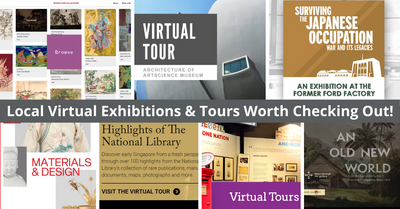
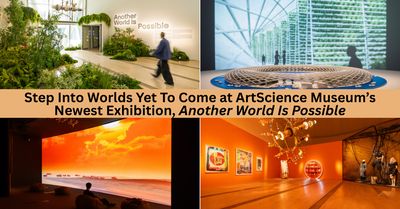
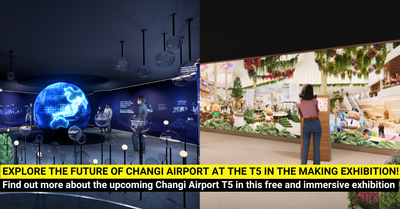
![30+ Of The Best Kid-friendly Museums And Exhibition in Singapore For All Ages [2025 UPDATED]](http://www.bykido.com/cdn/shop/articles/c2b80d63041615fedc7f3b0047c2c6b4_520x500_520x500_19113881-0300-4997-840a-e1018c34aa5a_400x.webp?v=1765950472)
